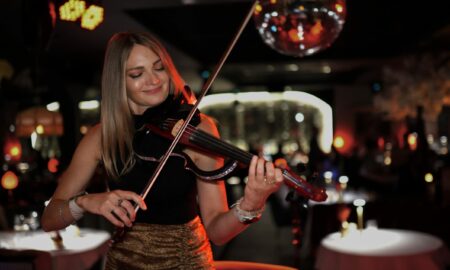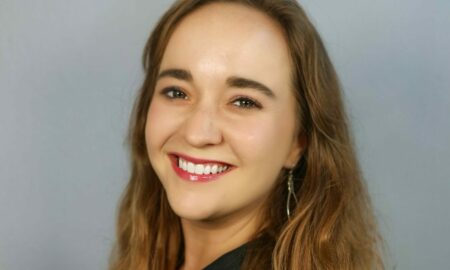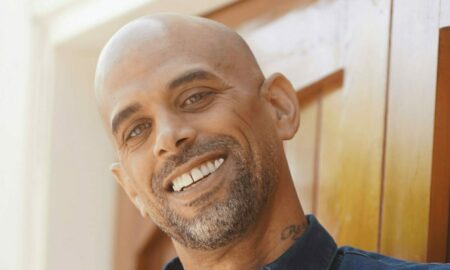

Today we’d like to introduce you to Hailey Loman.
Hailey, please share your story with us. How did you get to where you are today?
In 2013, after moving back to Southern California, I performed a piece, titled “Cleaning Human Resources”, with Lucy Campana and Gaea Woods. Although the event went well I felt unsatisfied with the performance’s documentation. I was unsure how to show event documentation that didn’t supersede the performance itself as the artwork. With this in mind, I began thinking about what sort of space would be in the service of this concern. Essentially, I wanted a space that when you walk in you immediately understood that it was a place for research and viewing in-process works or ephemera from performance rather finished objects. This led to developing Los Angeles Contemporary Archive (LACA), which is conceived as an art archive, library, and exhibition space that collects underexposed artistic modes of expression happening in the present. For me, it grew out of a desire to create a space that challenged established concepts of the archive as well as the art space altogether. As a result, I became increasingly interested in an interdisciplinary practice of information studies and art.
The collection at LACA is artist–run, which means that living artists are donating, deciding what is valuable, and generating their own language for describing and inventorying their own work. We became a non-profit in 2016 and it has been nice to have LACA transform into a resource space not just for artists but for students, archivists in the field, and people working in activism as well.
Overall, has it been relatively smooth? If not, what were some of the struggles along the way?
As co-founders of LACA, Eric Kim of Human Resources Gallery and I spent a lot of time at the Getty Research Institute before starting the space. Once up and running, archivists Saida Largaspada and Maite Muñoz and artist Andrew Freire became instrumental in creating the acquisition policies and implementing radical appraisal methodologies for the collections. They are also integral to organizing LACA’s talks, panels, readings, and exhibitions. In the early days, we kept asking ourselves: Why create an eastside repository when the Getty vaults already exist? What do we provide that they don’t?
Their acquisition policy usually ends up with acquiring materials after the person or movement has proven their value within a certain art canon or a place in history. These acquisitions typically occur after a donor has “groomed” their collection. In other words, such acquisitions are motivated by a donor’s interest that an institution will want to use their materials for posterity. At LACA, in contrast, we are interested in collecting the here and now. We investigate how things gain and lose value. And, we are interested in contemplating who gets to choose what is valuable.
We are frustrated with how little donors usually contribute to their own metadata or descriptions of their donations. This procedure is conventionally in the hands of the archivists or the institution. Generally, the process by which collections are categorized is by and large anonymous and, therefore, there is a lax review process for archival description. Therefore, it is typically difficult to pinpoint accountability for collections whose organizational order seem to contradict the meanings and values such object possessed for their makers.
We also wanted to create an archive that did not have restrictive approval processes for the public to access the items in the collection. Private institutions oftentimes have explicit rules about what sort of qualifications are required in order to gain access to their collections. Our interest is to make archives more approachable. There are good reasons why large institutions are in charge of archives – they are costly and custodianship is difficult. I was mindful of these challenges when I moved the archive to Chinatown. Could we give the collection the kind of care it needed? What kind of roles and resources could an archive offer to the neighborhood?
Everyone has a different feeling towards libraries and archives. These are often sites that have held extremely patriarchal exclusive materials. We decided early on that this was not a white glove space. We worked on making the collection and the programming to be inclusive of the story-telling, the ghostly and psychic, the spiritual and the silenced. It’s a space to acknowledge lived experiences becoming memory and it maintain an equal value towards what is absent in the stacks.
What else should our readers know?
Aside from an archive, LACA is invested in conversations around social justice, librarianship, and inclusive forms of stewardship.
If you had to go back in time and start over, would you have done anything differently?
At LACA we were uniquely confronted with the problem of how small archives with smaller budgets survive and make decisions. I remember looking towards larger archives for influence though it was not as relevant for us. In hindsight, what was more informative were visits to the Roger Brown Archive in Chicago and learning about Jim Kepner and how the One Archive began by being a collection people would access in his home. Also, Dorothy Porter Wesley, the librarian, bibliographer, and curator at Howard University was highly inspirational to our present-day cataloging practice. And, within the arts, Andrea Fraser’s Information Room and Renée Green’s Import/Export Funk Office were highly influential for me. Especially with regards to my present positions on how to navigate a project and space like LACA while also being a practicing artist.
These past few years in Chinatown, we became more comfortable with resisting dominant subjects and categories and how we organize our collection. The first few years of LACA I was constantly trying to make myself a “neutral acquirer of goods.” In other words, I was operating under the idea of how to remove my fingerprints or curatorial choices from the archival process. We did this by asking artists to provide details, to input their data, and to decide what should be saved and go into the collection. I am coming to the idea now that these biases are inevitable and should be transparent and explored.
To that end, I am now thinking about how reflexivity in the space can bring about something new and interesting. My own subjectivity is always changing with new information and I cannot return to the same place as before. What are the ethics, then, of an archive or library? Considering that each type have their respective personality. This has become increasingly important to me rather than remaining neutral and creating a false, non-existence.
Contact Info:
- Address: 709 N Hill Street
Suite 104/8
Los Angeles, California
90012 - Website: http://www.lacarchive.com
- Instagram: https://www.instagram.com/lacarchive




 Image Credit:
Image Credit:
Matilda Tjäder, Michael Dopp, Hailey Loman, and Otis class, Saida Largaespada and Nick Flessa, Lara Schoorl, Kelman Duran, and Meatgrinder class, Cal Tabuena-Frolli, Clarice De Veyra, Hailey Loman, John Calvin Story, Felix Skinner, Stuart Bertolotti Bailey
Suggest a story: VoyageLA is built on recommendations from the community; it’s how we uncover hidden gems, so if you or someone you know deserves recognition please let us know here.



















